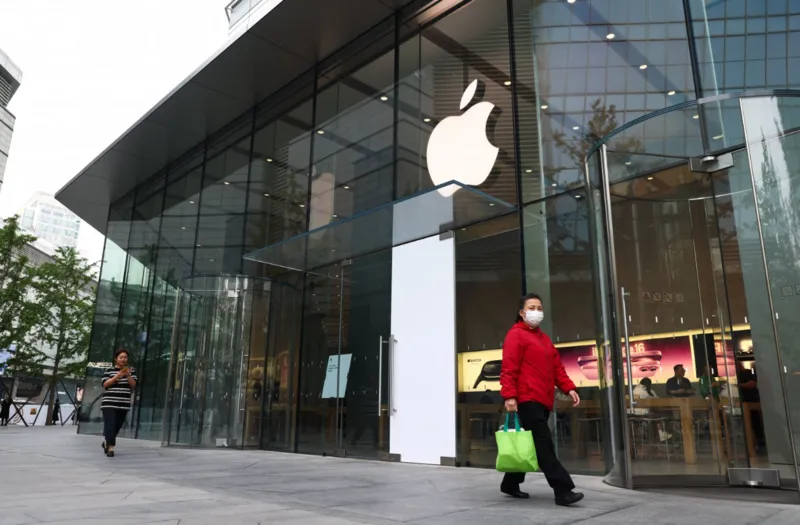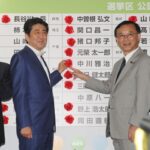Table of Contents
The trade war between the United States and China has turned pivotal. After months of escalating tariffs, Beijing finally came to the negotiating table. In an unexpected shift, U.S. President Donald Trump announced a “full and immediate ceasefire” on May 10, 2025, following two days of high-level talks in Geneva. The deal represents a reprieve for both economies, but as both sides continue to project strength, the long-term trade dispute is far from resolved.
So, why did China agree to negotiate now? And what does this moment mean for the U.S.-China relationship going forward? While there has been significant progress in reducing tariff rates, deeper issues remain unresolved, and the future of the global economy hinges on the outcome of this extended trade negotiation.

China’s Defiance: Standing Tall Amidst Tariffs
For months, China’s stance had been one of defiance. The Chinese government had made it clear through social media posts and official statements that it was unwilling to back down in the face of Trump’s tariffs. Chinese officials regularly dismissed U.S. demands and reinforced the message that Beijing would not yield under pressure.
However, the narrative has now shifted. In a major departure from previous rhetoric, China’s Commerce Ministry released a statement acknowledging the importance of these talks, describing the agreement as “an important step to resolve differences.” This softened tone is significant—just a month ago, it would have seemed unthinkable that China would publicly concede to such an agreement with Washington.
What’s changed? China’s domestic economic woes seem to have played a major role in the shift. Despite its ability to withstand the economic pressures from the U.S. trade war, China’s economic growth has slowed in recent months, particularly in sectors most affected by U.S. tariffs.
The Economic Toll: Why China Is Feeling the Pressure
China’s economic growth rate has suffered from the tariffs. Factory output has significantly slowed, and many companies are being forced to lay off workers as production lines that feed U.S.-bound goods grind to a halt. The consumer price index (CPI) dropped 0.1% in April 2025, marking the third consecutive month of decline. This is an alarming sign of low consumer confidence and waning demand within the domestic market.
Even major American companies like Apple, which rely on China’s manufacturing base, have expressed concern about the rising costs and uncertainty created by the trade war. The tariffs have disrupted global supply chains, and the costs of goods have increased, further contributing to economic stagnation in China.
As the economic pressure mounted, Beijing began to see the value in re-engaging with the U.S. to avoid further economic downturns. Chinese officials have acknowledged that a trade deal would offer a welcome relief to both sides—something that had become undeniable after several months of trade deadlock.

A Temporary Reprieve: U.S. and China Agree to Pause Tariffs
The result of the Geneva talks has been a mutual agreement to pause the tariffs on Chinese imports. U.S. tariffs on Chinese goods will drop from the previous high of 145% to 30%, while China’s tariffs on U.S. products will fall to 10%. This reduction in tariffs has been welcomed by economists, who see it as a positive step for both economies and for the global market.
However, despite the tariff reductions, both countries continue to hold firm on their respective demands. U.S. Treasury Secretary Scott Bessent stated during a press conference in Geneva that neither side wants a decoupling of the two economies. The current agreement is a temporary measure, but the more complicated issues, such as Chinese subsidies and industrial policies, remain unresolved.
While Trump heralded the progress made during the talks, calling them a “total reset” in U.S.-China relations, it’s important to recognize that this is far from a permanent solution. As the trade war continues to evolve, both nations will need to continue negotiations to address the underlying issues.
The Future of U.S.-China Relations: Still Tense, Still Complicated
Though the Geneva talks have de-escalated tensions for the time being, there are clear signs that this trade battle is far from over. Zhiwei Zhang, chief economist at Pinpoint Asset Management in Hong Kong, noted that the tariff reductions are better than expected, but fundamental trade imbalances remain. China continues to sell more goods to the U.S. than it buys, and the trade deficit remains a sticking point.
Additionally, there are geopolitical tensions that complicate the trade talks. Issues like China’s policies in the Taiwan Strait, its relationship with Russia, and its military expansion in the South China Sea are bound to continue influencing U.S.-China relations, regardless of the trade negotiations.
The Role of Xi Jinping: Balancing Domestic and International Pressure
For Xi Jinping, the talks in Geneva serve a dual purpose. On one hand, the reduction in tariffs offers economic relief for China’s troubled economy. On the other hand, China’s leader needs to maintain the image of strength and self-sufficiency to both the domestic audience and the international community. Beijing has worked hard to project an image of independence and resilience, making it clear that China will not be bullied into submission by Washington.
Xi’s leadership will be tested in the coming months. While Trump’s trade war may have been difficult for China, it was not as catastrophic as some anticipated. Now, as China seeks to balance its internal economic struggles with its external image as a global leader, the road ahead remains fraught with challenges.

What’s Next? A Long Road Ahead
While the temporary pause in tariffs may signal a positive shift, the core issues that have defined the U.S.-China trade war are far from resolved. The U.S. and China will need to continue working through complicated trade imbalances, intellectual property theft, and Chinese industrial policies, all of which will require significant diplomatic negotiation.
Moreover, as the global economy slowly recovers from the fallout of the pandemic, the trade tensions between the U.S. and China may resurface. Whether these talks lead to long-term stability or another round of tensions remains to be seen.
Author Profile

- Li Li, associate professor and master’s supervisor at Southwest University. B.A. in English for Education from Southwest Normal University, M.A. in English Translation and Interpretation from China Foreign Affairs University, Ph. D. in Japanese Cultural History from Nankai University (all above are in China). Also has studied at Osaka Sangyo University and Kokugakuin University in Japan and been a Fulbright visiting scholar to Western Kentucky University in US. A multidisciplinary and versatile instructor with a trilingual mastery of Chinese, English and Japanese, known for Combining foreign language teaching with history and humanity cultivation. Academic researches center on Japanese history, international relations and Western culture studies. Work experiences include teaching at Capital Normal University, Chongqing Normal University, and Southwest University. Has published multiple academic papers, translated works, authored or co-edited several textbooks and monographs; provided language services for several high-level and high-profile international events.
Latest entries
 GeopoliticsAugust 22, 2025The Limits of Russia’s Friendship: Moscow’s Calculated Response to the Iran Crisis
GeopoliticsAugust 22, 2025The Limits of Russia’s Friendship: Moscow’s Calculated Response to the Iran Crisis Japanese PoliticsJuly 22, 2025Japan’s Upper House Election: Prolonged Instability and Its Impact on Domestic and Foreign Policy
Japanese PoliticsJuly 22, 2025Japan’s Upper House Election: Prolonged Instability and Its Impact on Domestic and Foreign Policy Middle East AffairsJuly 20, 2025Will Israel Ever Face Consequences for Bombing Its Neighbours?
Middle East AffairsJuly 20, 2025Will Israel Ever Face Consequences for Bombing Its Neighbours? Energy & ClimateJuly 13, 2025Iran Conflict: Four Lessons Learned for the Oil Market
Energy & ClimateJuly 13, 2025Iran Conflict: Four Lessons Learned for the Oil Market


1 comment
Your content always delivers value! Can’t wait to see what you share next.